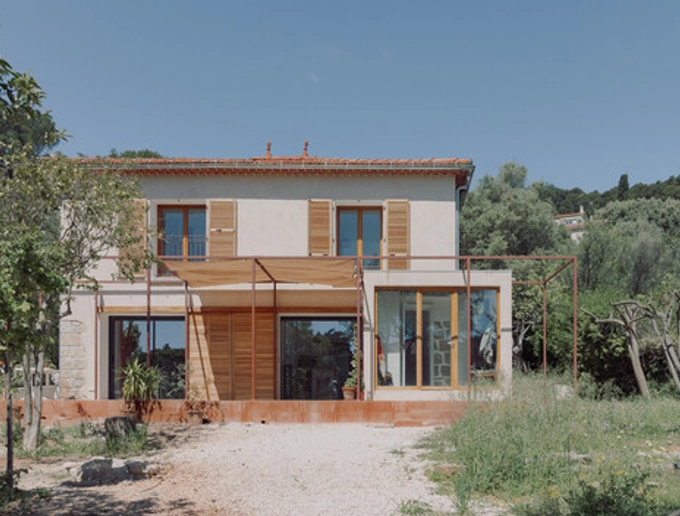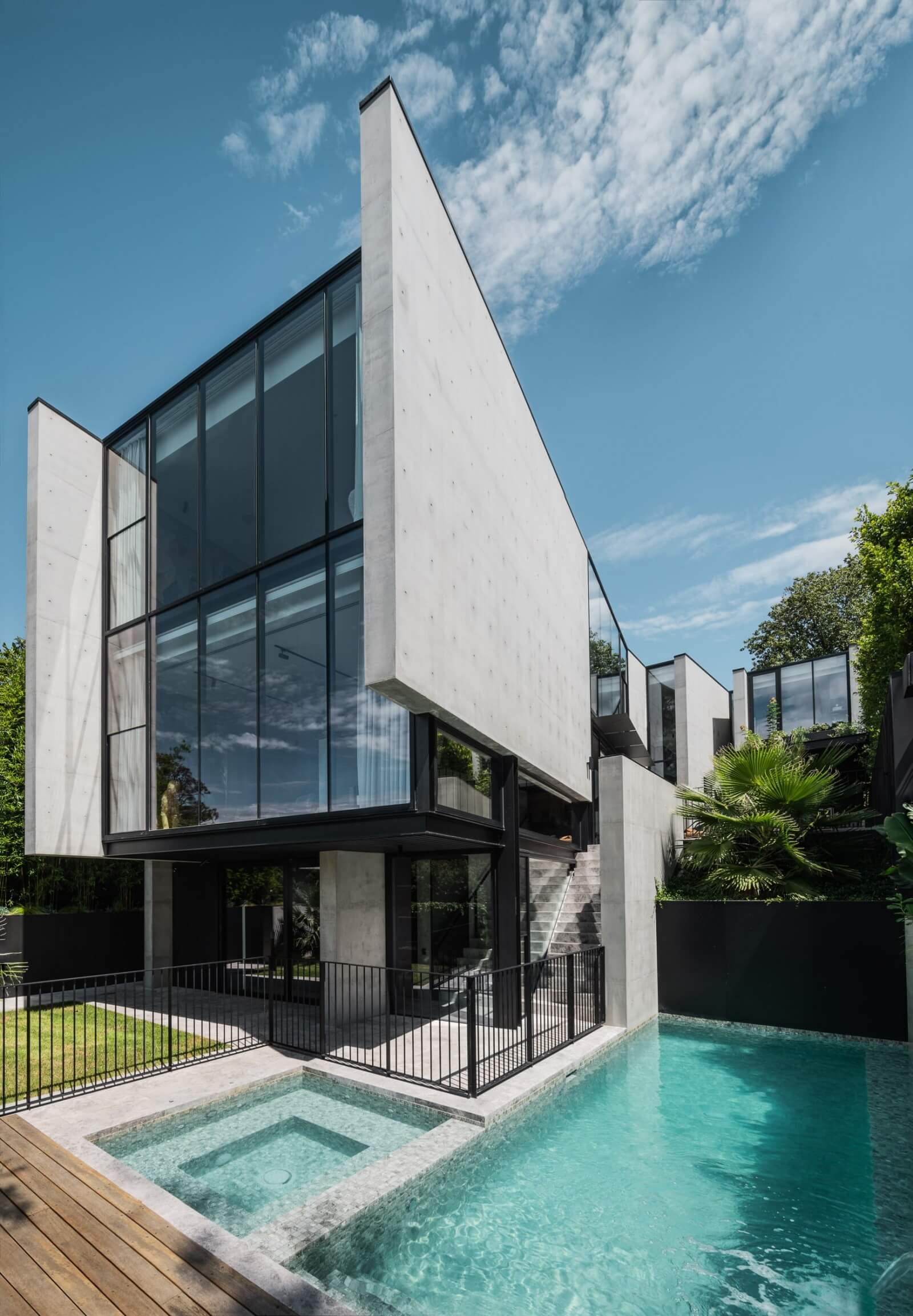Reliable Residential Architectural Firm for Personalized Home Designs and Renovations
Reliable Residential Architectural Firm for Personalized Home Designs and Renovations
Blog Article
Top Fads in Residential Style You Need To Know Concerning
As household style proceeds to advance, several engaging trends are shaping the way we create and inhabit our home. Key developments such as sustainable building techniques, the integration of smart home innovation, and the increase of modular homes emphasize a considerable change in the direction of both performance and environmental duty. Furthermore, principles like open plan living and biophilic style are redefining our interaction with space and nature. Comprehending these fads not only educates layout selections however likewise reveals wider ramifications for lifestyle and community - residential house architect. What might these advancements indicate for the future of domestic living?
Sustainable Building Practices
A boosting number of household projects are accepting sustainable building practices, driven by an expanding recognition of ecological influence and energy performance. This change is defined by the combination of green products, energy-efficient designs, and ingenious building and construction approaches. House owners and home builders are progressively focusing on making use of renewable energies, such as bamboo and recycled metals, which not only reduce the carbon impact however likewise improve the toughness and visual appeal of residential or commercial properties.
Integrating energy-efficient systems is an additional crucial element of sustainable building - residential house architect. Features such as high-performance insulation, energy-efficient home windows, and solar panels are coming to be criterion in new household layouts. These components not just add to reduced power consumption yet likewise offer significant lasting cost savings for home owners
In addition, the design of lasting homes frequently emphasizes natural light and ventilation, lowering the reliance on artificial lighting and climate control systems. Landscape design methods, such as xeriscaping, additional advertise sustainability by decreasing water usage.
As the need for sustainable living options remains to increase, the household design industry is poised to adapt and introduce, guaranteeing that future homes are not only ecologically accountable but functional and likewise comfy for their passengers. - residential house architect
Smart Home Modern Technology
Smart home innovation is revolutionizing the way homeowners engage with their home, enhancing convenience, power, and safety monitoring. This innovative strategy integrates different devices and systems, permitting individuals to manage their homes from another location or with automated processes. Central to this fad is the usage of wise devices such as thermostats, lights, security electronic cameras, and devices, all linked via the Net of Things (IoT)
Among one of the most attractive functions of clever home innovation is the ability to personalize settings for optimum power efficiency. House owners can monitor power use and change cooling, illumination, and heating based upon their routines, substantially lowering utility expenses. Sophisticated safety and security systems furnished with clever locks and monitoring cams give peace of mind, making it possible for remote surveillance and notifies to prospective protection violations.
Assimilation with voice-activated assistants boosts individual experience, allowing house owners to regulate tools with easy voice commands. As modern technology continues to advance, the potential for wise home systems to boost lifestyle expands, making them an important factor to consider in contemporary household architecture. Inevitably, clever home modern technology is not just a pattern however a fundamental shift toward more smart living environments.
Open Principle Living
Open up principle living has become a specifying attribute in contemporary residential design, defined by the removal of typical barriers in between areas. This style ideology promotes fluidity and connectivity within the home, permitting a seamless transition between areas such as the kitchen, dining, and living spaces. By getting rid of dividers and walls, open idea formats create a sense of space, fostering an inviting atmosphere that boosts social communication.

Furthermore, this technique to property design lines up with minimalism, concentrating on useful simplicity and aesthetic comprehensibility. Home owners value the convenience of these designs, which can be conveniently adapted to show individual design with furniture plan and decor. As open principle living proceeds to acquire traction, it continues to be a testimony to developing family members characteristics and the need for homes that enhance connection and convenience.
Biophilic Style
Biophilic style has actually come to be significantly substantial in household style, highlighting the intrinsic link between human beings and nature. This design approach seeks to integrate natural environments right into living spaces, therefore fostering a sense of well-being and boosting the high quality of life for residents. By including features such as natural light, vegetation, and organic materials, biophilic style promotes an unified partnership in between indoor environments and the natural world.
Trick components of biophilic design include huge windows that offer unhampered views of exterior landscapes, living wall surfaces that introduce greenery right into insides, and open flooring plans that encourage air movement and natural light penetration. Water features, both inside and outside the home, serve to produce calming atmospheres and boost sensory experiences.
Moreover, the usage of sustainable materials not just supports environmental stewardship but likewise adds to much healthier interior air quality. As recognition of ecological problems rises, home owners are progressively prioritizing designs that show their link to nature. Basically, biophilic layout investigate this site not just elevates aesthetic appeal but also addresses psychological and mental needs, making it a crucial fad in modern residential design.
Modular and Prefab Homes

Furthermore, modular and prefab homes are made with sustainability in mind. Numerous producers utilize eco-friendly materials and energy-efficient systems, such as solar panels and advanced insulation methods, adding to minimized energy usage and lower energy bills for home owners. The flexibility of design alternatives permits modification, accommodating diverse functional demands and visual choices.
As the demand for budget-friendly real estate continues to rise, prefab and modular homes present a sensible service, attending to both financial and environmental challenges. Communities are increasingly acknowledging the potential of these frameworks, integrating them into city and rural settings. Generally, the trend towards prefab and modular homes symbolizes a change towards much more lasting, reliable, and versatile living settings, making them a crucial element of contemporary household style.
Conclusion
Lasting structure techniques and wise home technologies boost efficiency and comfort, while open principle living and biophilic design foster social communication and a connection to nature. The surge of modular and prefab homes provides personalized and cost effective options, showing a wider shift in the direction of functional and responsible living.
Key growths such as sustainable building methods, the assimilation of wise home innovation, and the rise of modular click for info homes underscore a substantial change in the direction of both performance and environmental obligation.The rise of modular and prefab homes has changed the domestic architecture landscape, providing ingenious solutions for efficient and lasting living.Moreover, prefab and modular homes are made with sustainability in mind. In general, the fad towards prefab and modular homes represents a change towards more lasting, reliable, and adaptable living environments, making them a pivotal facet of modern household design.
Sustainable building practices and clever home modern technologies boost effectiveness and convenience, while open concept living and biophilic layout foster social interaction and a link to nature.
Report this page